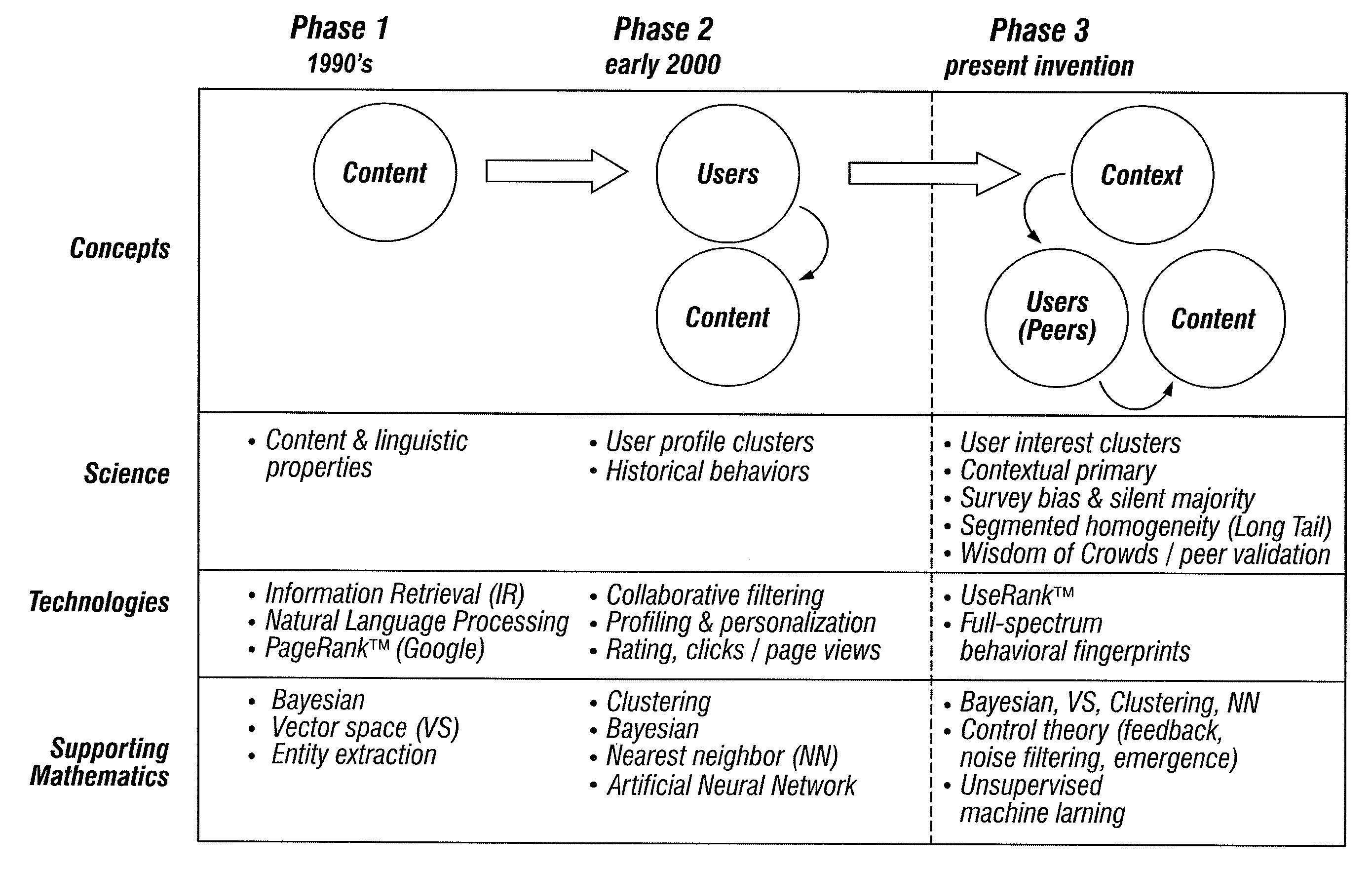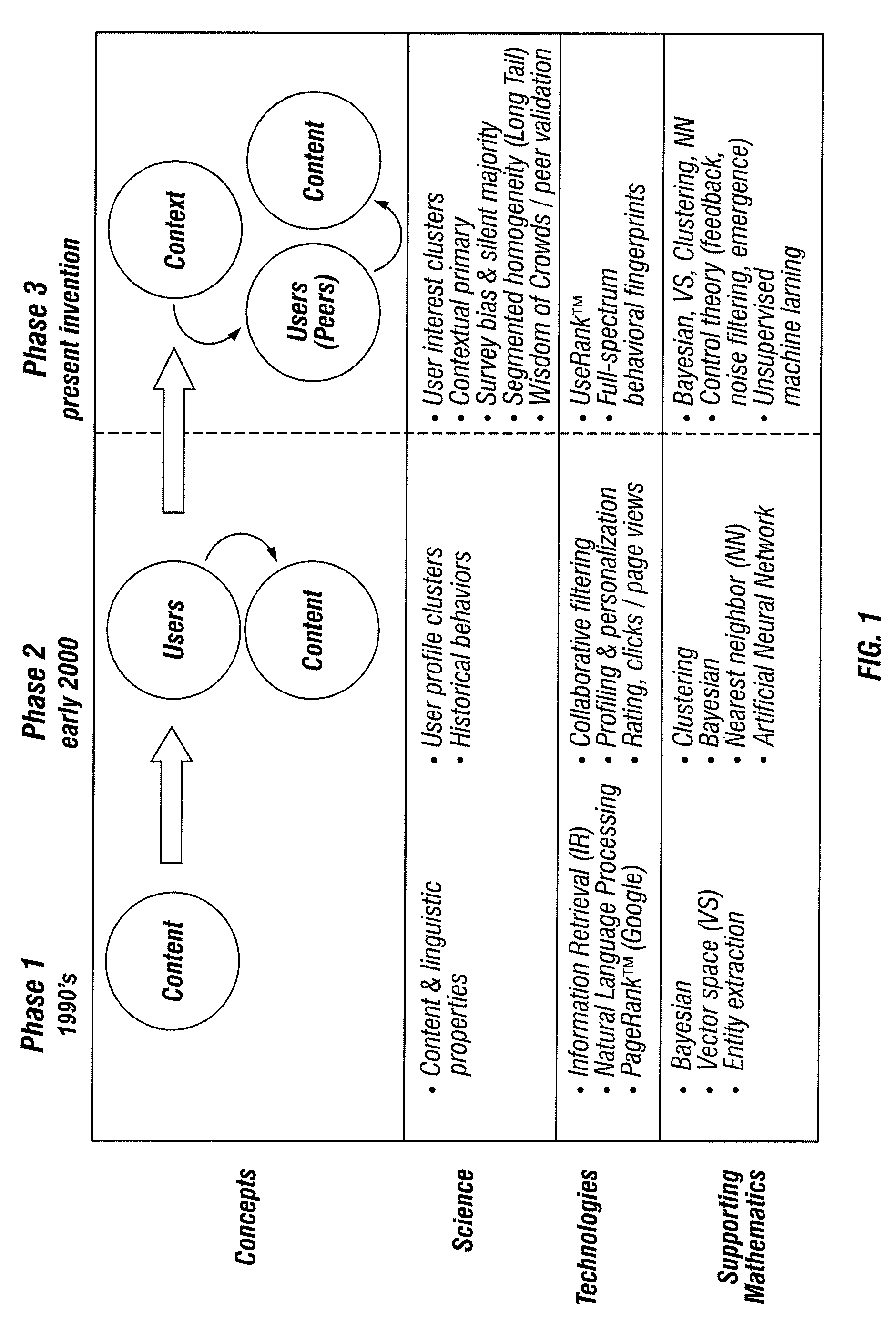Method and Apparatus for Context-Based Content Recommendation
a content recommendation and context-based technology, applied in the field of electronic access to information, can solve the problems of wasting a lot of company money, losing advertising revenue opportunities, unproductive intranet employees, etc., and achieve the effect of improving their functionality
- Summary
- Abstract
- Description
- Claims
- Application Information
AI Technical Summary
Benefits of technology
Problems solved by technology
Method used
Image
Examples
embodiment
PREFERRED EMBODIMENT
[0111]In the preferred embodiment of the invention, a Recommendation System is implemented in a Software as a Service (SaaS) Model to provide automatic suggestions that help Web site visitors find products or content they like or need. FIG. 2 is an architectural schematic diagram of a method and apparatus for context-based content recommendation. In FIG. 2, interaction of users with a Web site produces implicit emergent behaviors. Such user interaction includes page referrals, links, entry trails, queries, page sizes, mouse movements, peers, negative experiences, virtual bookmarks, time spent, virtual printing, exit trails, and the like. Such behaviors are processed in a recommendation / affinity engine according to the invention, resulting in automatic content and product recommendations in the form of social search and navigation guides, as well as providing real-time feedback to a merchant such as regarding visitor clubs, and identifying content gaps (each of wh...
PUM
 Login to View More
Login to View More Abstract
Description
Claims
Application Information
 Login to View More
Login to View More - R&D
- Intellectual Property
- Life Sciences
- Materials
- Tech Scout
- Unparalleled Data Quality
- Higher Quality Content
- 60% Fewer Hallucinations
Browse by: Latest US Patents, China's latest patents, Technical Efficacy Thesaurus, Application Domain, Technology Topic, Popular Technical Reports.
© 2025 PatSnap. All rights reserved.Legal|Privacy policy|Modern Slavery Act Transparency Statement|Sitemap|About US| Contact US: help@patsnap.com



